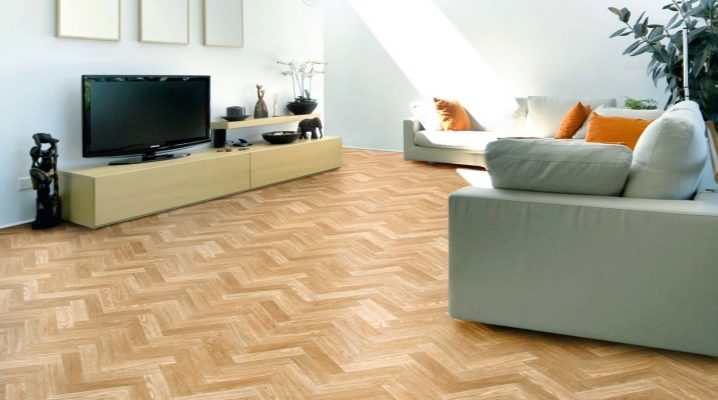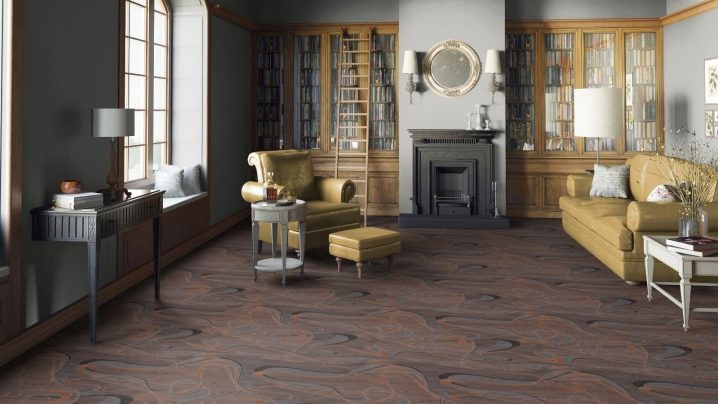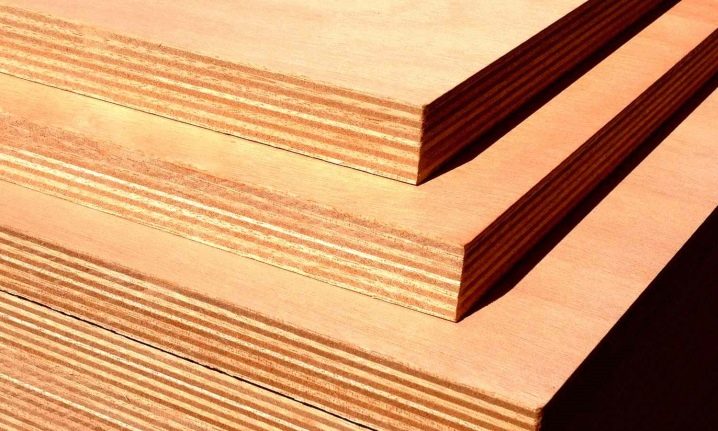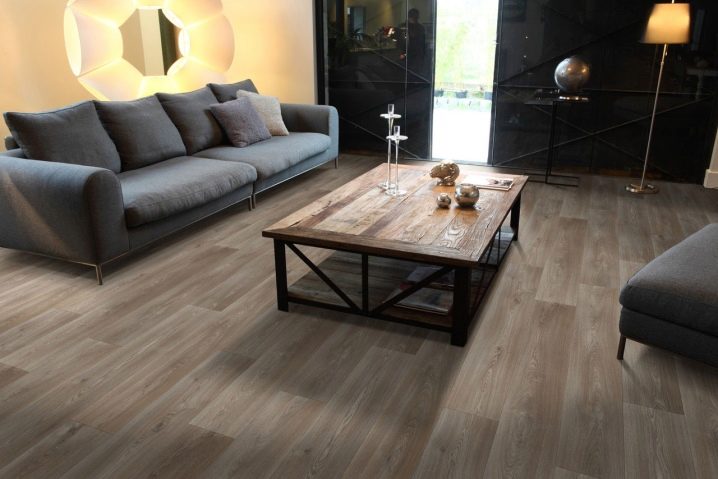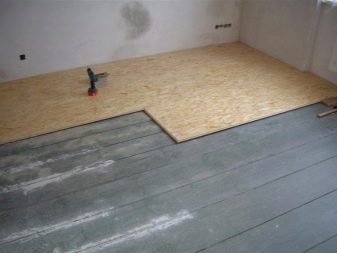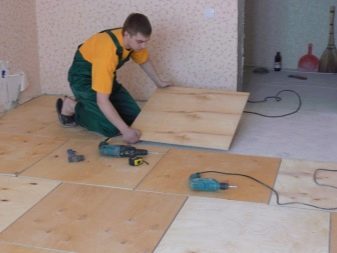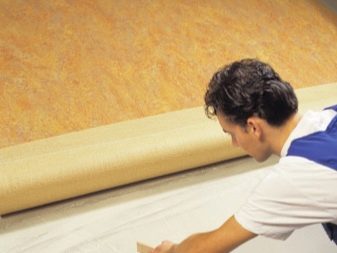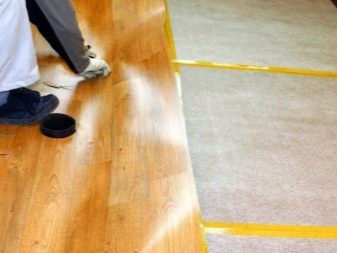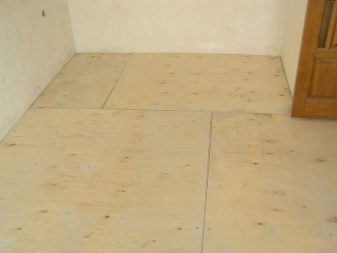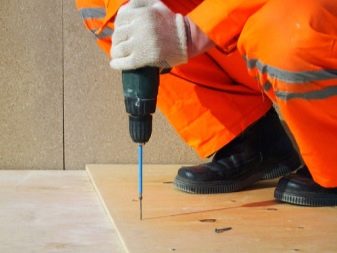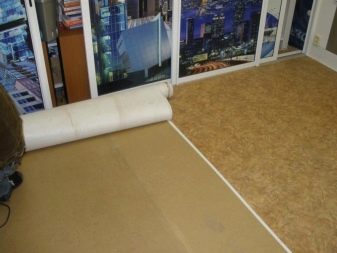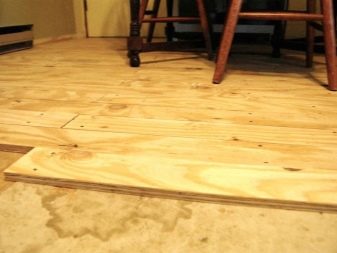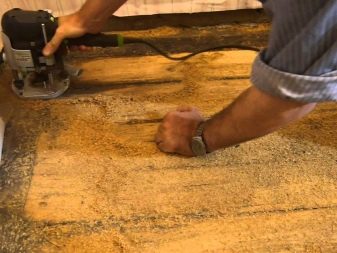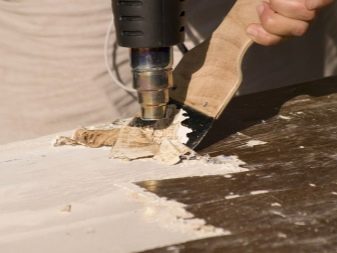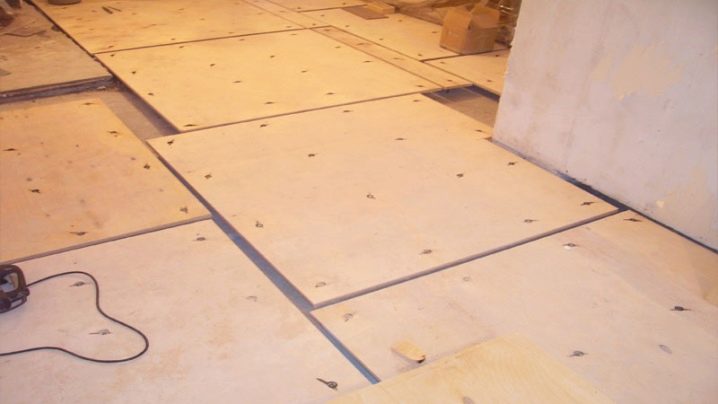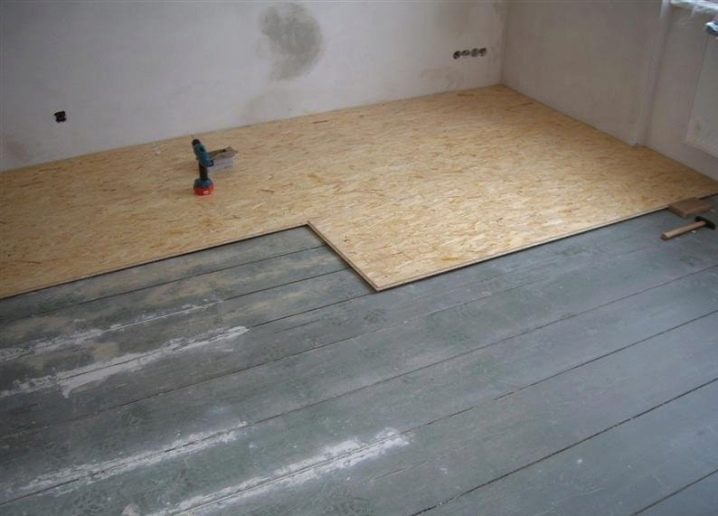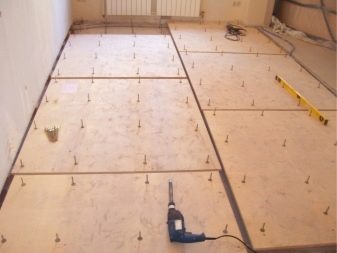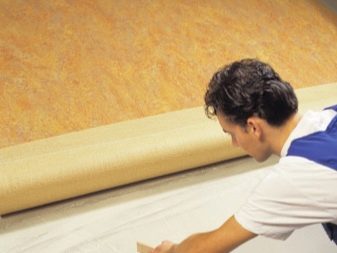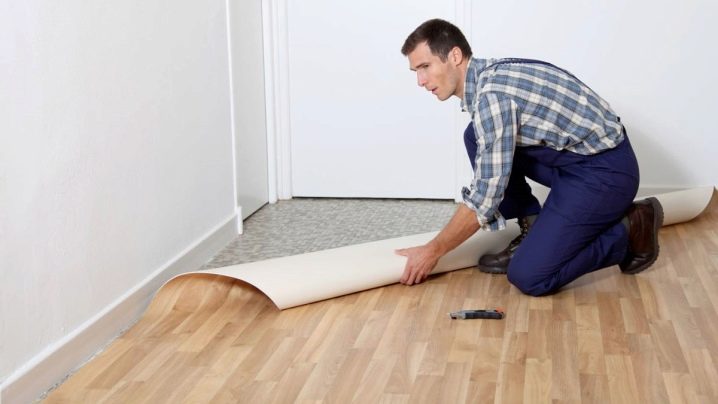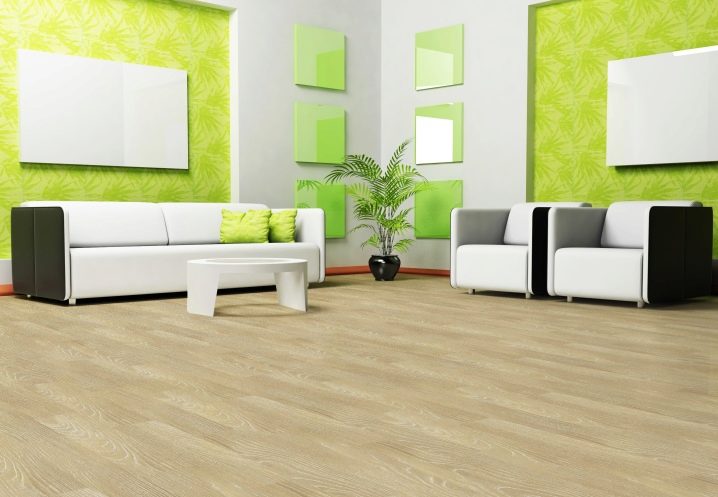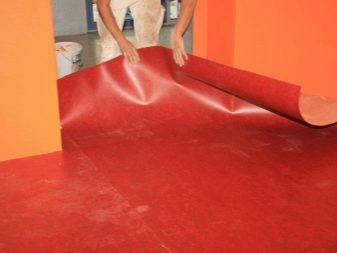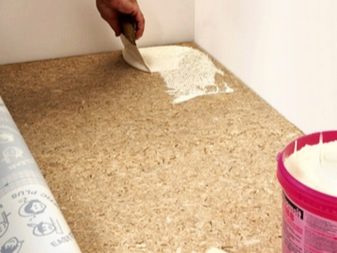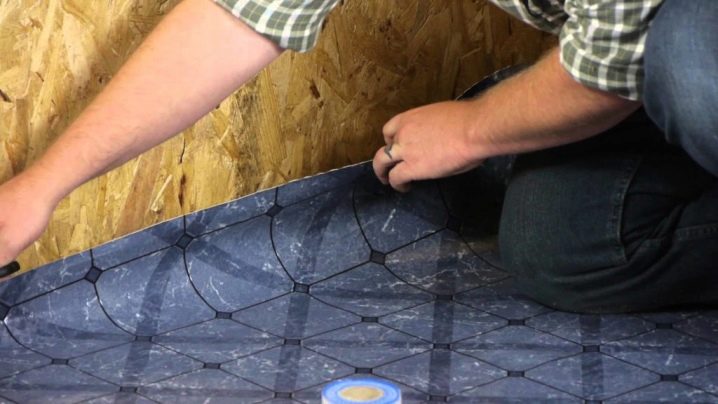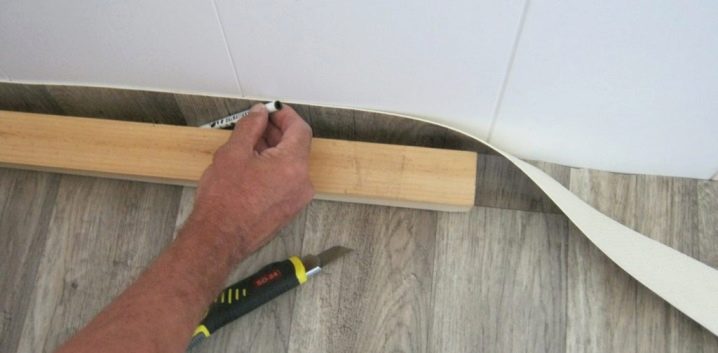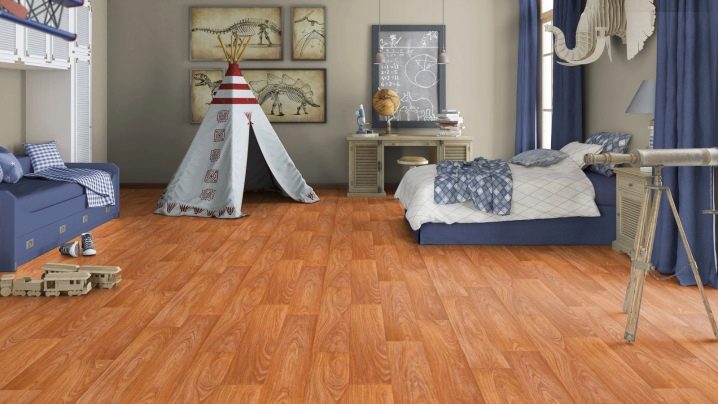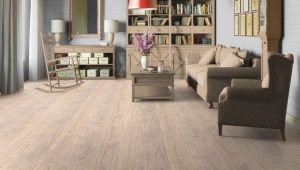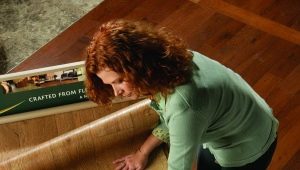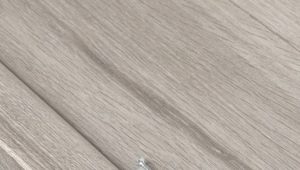Laying linoleum on plywood
Linoleum is one of the most popular and inexpensive materials for flooring. At the present stage of technology development, the quality of this coating has improved significantly, a lot of various substances have appeared in the composition of linoleum, and the variety of colors and textures shake the imagination. Treatment with special compounds makes this type of coating durable, hypoallergenic and easy to clean.
But in order for linoleum to be evenly laid on the floor surface, an even solid foundation is needed, even if your floor, at first glance, looks even. This is especially true of plank flooring, since the elastic material of linoleum will repeat all the recesses and protrusions of the boards, and over time and wipe it in these places. The substrate under the linoleum can be made with your own hands from quite budgetary material - plywood.
The advantages of plywood over other materials
You can create a suitable base for linoleum by installing a subfloor using materials such as plywood, OSB, particleboard, fiberboard sheets:
- Consider the option with plywood. It is made of interlaid veneer sheets glued together using certain resins. Veneer is strips of natural wood of various breeds of a small thickness of 1-10 mm. It is assembled perpendicular to the direction of the fibers in sheets of certain sizes, most often 2.44 x 1.22 m. The thickness of the sheets depends on the thickness of the veneer used and the number of layers, at least three layers. It can be from 3 to 30 millimeters. Differs in grade, moisture resistance and quality of finish.
Plywood is a lightweight, eco-friendly material that has sufficient strength, but is easily sawn with an electric jigsaw.
- There are other options. Using sheets of hardboard, It is possible to level a worn wooden floor only if there are no large flaws. They are thin and all defects become visible over time. In addition, when moisture gets on the fiberboard, bubbles form, and, drying out, the sheets do not restore their shape. Chipboard sheets from moisture are destroyed, turning into dust, may contain harmful toxic substances.
- Domestic plates OSB have synthetic additives necessary to improve strength and moisture resistance. Environmentally friendly and moisture-resistant analogues of chipboard for the floor is too expensive, as well as the Canadian version of OSB. For the floor covering, the third category OSB slab and plywood of the construction grade FSF will be optimal. And from the environmental and financial side - plywood brands FBA and FK.
The subtleties of laying linoleum on plywood
Linoleum is an elastic material exhibiting all base defects. It can be laid on a concrete floor or on a wooden floor. To preserve the appearance and increase the life of the surface should be committed to the ideal, be durable and smooth. When you need to warm or level the floor, as one of the options, apply plywood:
- If we have a concrete base, then just visually check the condition of the floor. It should be smooth and clean. Drops of the solution on the screed after repair get off or polished, you can even brick. Beat the laser, water or a simple level of the label around the perimeter. Using a tape measure check the plane. If the difference is more than 3-4 cm - level the floor with a coupler.
In the same way do when the floor is made of concrete slabs.
- Then follows waterproofing process. There are several types of it. But in this case it is enough to put roofing material, sticking the sheets together with mastic, or euroroofing material, welding with a blowtorch. The easiest way is to lay a thick plastic film, holding it together with scotch tape.
- Plywood is put on top.whose sheets are cut into four pieces. They do this because a solid sheet is subject to greater deformation due to temperature differences. For the same reasons, the distance to the wall and the plywood is up to one centimeter, and between the pieces themselves three to four millimeters. First, plywood is drilled with a 2-3 mm drill.
- Next stage lay out the sheets on the floor and schedule on the basis of the place of fasteners. After that, the plywood is removed and the holes are drilled for the dowels of the 6 mm drill with a perforator. Staple sheets to the base in a staggered manner on the dowels 5x60 mm. Hats sunk. Plywood can be put on a frame of boards with a thickness of one centimeter. It is assembled in the form of square honeycombs in steps of 30-60 cm. It is fastened to the floor with the same dowels, and between them with self-tapping screws.Honeycombs can be filled with insulation. The joints of plywood sheets are placed on the frame in a staggered manner and fastened with nails or screws. In the joints should not be more than two seams. As a fastener, you can use parquet paste or liquid nails.
- If indoors wood floor, it is also subjected to visual and technical inspection. Raw and rotten boards are dismantled. If mold or mildew is present, find out the possible cause of the deficiency. Eliminate it, and the place of damage is treated with anti-fungal agents. Loose and creaking boards nail or attract to the logs with self-tapping screws. The length of the screws should not exceed the width of the log, so as not to rest on the concrete. When the lags themselves bend, the floor is sorted out completely. To do this, dismantle the flooring and strengthen the lags or, if necessary, replace them with new ones.
They are fixed to the wall with brackets, and then screwed to the concrete with anchor bolts using lining (for example, from fiberboard) or wedges. Then collect the floor back.
- Old paint from boards must be removed., warming it up with a building dryer and scraping with a spatula. Curved boards are scaled by a plane.For large gaps prepare special slats, hammer them and grind. Small gaps propenyut or pour mastic, putty. On the prepared floor, you can glue plywood or fasten it with screws.
- The distance between fasteners must be at least 15 cm. When the floor is outwardly very bad, but strong, then assemble a wooden frame in the same way as in the case of the concrete floor. It must be remembered that when installing plywood and linoleum on a wooden floor, it is necessary to leave a ventilation hole that prevents condensate from accumulating in the subfield. It is covered at the end of the work with a decorative element.
Which is better to lay?
As a rule, two types of plywood are used for flooring:
- FC construction plywood, the veneer of which is glued with carbamide resin;
- FCM plywood, made on the basis of melamine resins.
These are the most eco-friendly options of average moisture resistance. The higher the moisture resistance, the more harmful chemicals they contain. Plywood is of four grades A, B, C and D. Since the external beauty will be hidden by linoleum, there is no need to spend money on it.
But when using low-quality varieties, problems may arise that will have to be further corrected.
For unpolished (NS) plywood when using glue as a means for fasteners, its consumption increases. Sh2 (ground on both sides) is expensive for the floor, and Sh1 (ground on one side) is what you need. Plywood before installation should be dried indoors for several days in a vertical position. To increase the density, you can apply several layers of furniture lacquer or soak it with antiseptic. Sheet thickness must be between 8 mm and more. If necessary, you can put two layers, if the height from floor to ceiling allows you to do this without a large loss of free space.
When plywood is laid on logs, it’s better to take 18 mm.
Training
Linoleum should be spread in a free room of a larger area a few days before laying, in order to align it. If this is not possible, then you must first prepare the floor:
- Using a trowel, the joints between the plates are puttied with a special putty on wood.
- After it dries (the drying time is indicated on the packaging by the manufacturer), it is rubbed with fine emery paper or a paint net. It is impossible to apply mortar on a cement or plaster basis for puttying a plywood floor, because they are cracked.
- It is not necessary to cover the entire surface with a mortar, as they do for the ceiling or walls.
- After that, carefully clean the garbage with a vacuum cleaner.
- And last but not least you can soak the plywood with hot linseed oil or a special primer on wood.
- All work is done in a room with a temperature not lower than 18 degrees and humidity not higher than 50-80%. After that, the garbage is carefully removed, linoleum is put in, unrolled around the perimeter and give him time to rest.
How to put?
The simple technology of laying linoleum on the substrate allows you to easily cope with this work:
- Reclined (straightened) linoleum is brought into the room and laid on a pre-prepared floor.
- Level the surface from the center to the edges, allowing the material to be properly distributed around the perimeter of the room.
- Using a sharp knife, the edges are cut along the walls, given that there may be shrinkage in some types of linoleum. Trimming under the door frames is done very carefully, since the edges do not cover anything. Technical holes are cut to bypass pipes or other obstructions.
- Mounted skirting. If there is no threshold in the doorway,then in the place of the end of the coating are mounted special powders made of soft metal, which can be purchased in advance, along with linoleum.
How to attach?
Attach the linoleum to the plywood base with glue, double-sided tape or special double-sided adhesive tape:
Variant with glue
Prepare linoleum in the manner described above. After that, fold half of it into a roll to the center of the room or bend in half. On the vacated area evenly applied glue with a spatula with teeth.
Gently unfold the linoleum into place, helping with a wooden scraper. In the same way do the other half. Then roll the entire surface area of the roller from the center to the periphery to remove air bubbles that may occur during operation. It is allowed to dry for a day, after which the installation of the baseboards is completed and you can start settling.
It is desirable to cover the entire area with one piece of cloth. If this is not possible, then the two pieces are joined together. To do this, throw one piece on the other for a small distance, joining the picture. The joint is selected taking into account the future load on the linoleum - the joint will be less rubbed where it will be less attacked.
If possible, it is made where the furniture will be, away from the center of the room.
With the help of a long slat both blades are cut in the middle of the overlap with a sharp knife. Remove the trim and put masking tape on top of the seam so as not to smudge the surface when gluing. Scotch cut through, take liquid welding with a needle at the end of the tube and fill the seam along the entire length. After 15-20 minutes, remove the tape and give time to dry welding according to the instructions indicated on the tube.
Glue the seam and using hot welding. But for this you need a special tool. The easiest way is to apply glue under the seam and put a flat rail along the entire length on top, crushing it with something heavy. However, this method is only suitable for thick linoleum.
Option with adhesive tape or duct tape
An easier way to do the laying with double-sided tape. Stick it with one side to a clean plywood with a 40x40 or 50x50 mesh grid. Prepare the linoleum and roll it into a roll. Gradually remove the protective film from the tape, and as you move, roll up the roll, fixing it on the adhesive tape net.
Do this at least two people to evenly distribute the entire coating material, which will cling to the adhesive adhesive tape.
This method of laying linoleum on the substrate simplifies its disassembly in the future.
Useful tips
Finally, remember:
- If there are no large loads on the floor associated with the intensity of walking, or it is a small area up to 15-18 m2, it is not necessary to glue the linoleum.
- The adhesive can be used on a water base, such as PVA or Bustilat. But for plywood, this is undesirable because the veneer can go away. Therefore, it will be more profitable to contact the seller when buying linoleum, you will be selected for the glue that you purchased.
- It is possible to glue linoleum on plywood base on mastic, and on hot resin, and even on oil paint.
More information about how to lay linoleum on plywood, you will learn from the following video.
